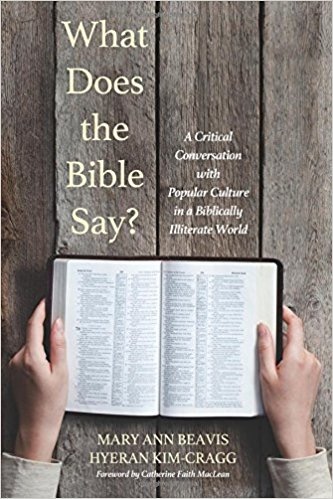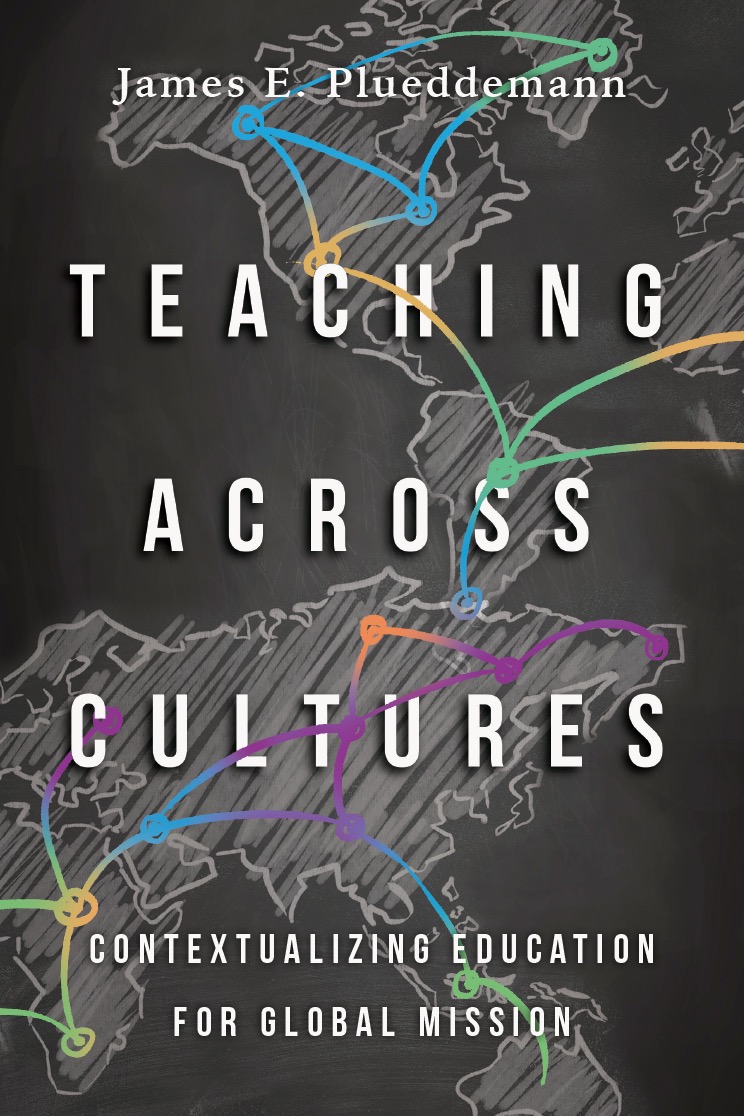
Book Reviews - 5 results
Select an item by clicking its checkbox
Studio Teaching in Higher Education - Selected Design Cases
Date Reviewed: September 18, 2017
A conservatory of music in my hometown annually brings to campus a famous singer who leads a master class for its voice students. This is a ticketed event open to the public and regularly draws a large audience. It’s simply fascinating to watch the singer teach. One by one, students come on stage, they perform pieces they have practiced for the occasion, and she offers her critique. Occasionally she offers a mini-lecture on some aspect of singing but mostly she makes students work certain sections of their pieces over and over, all the while offering correction, advice, and support. The audience hears how their music – which sounded pretty good, to begin with – improves with her coaching.
While a master class is not the same thing as a studio, the two pedagogies share certain features. In my experience, teachers of religion and theology rarely make use of studio pedagogies; this book made me realize that we should.
Studio pedagogy is typically defined by the following elements: lengthy design sessions conducted in large spaces where materials are readily available and works-in-progress can be publicly and permanently displayed. Instructors roam the space, stopping at individual desks to offer feedback that gets intentionally overheard by nearby students. Lectures and discussions are rare; studio pedagogy relies instead on coaching, modeling, correcting, responding, affirming or questioning choices, and occasionally offering on-demand content instruction. It combines authentic learning theory, constructivism, socialization into a profession, and the theories behind flipped classrooms and communities of practice. It shares features of other student-centered pedagogical approaches such as problem-based learning and service learning, although it focuses more on the process of students taking iterative steps toward a final, deliverable product of their own choice and making.
This book is an edited volume presenting fifteen narratives by design instructors describing the studio courses they teach in fields like architecture, interior design, and instructional design. Contributors describe the joys, challenges, concerns, and vulnerabilities they have experienced through this sort of teaching. Overhearing their honest confessions and reactions is one pleasure of reading this book, and it gives the reader a taste of what being in a studio is like. This volume is also designed like a studio in that its editors explicitly eschew analysis and summary, preferring instead to “curate” the narratives and let readers draw their own conclusions.
Indeed, religion and theology teachers might have to work hard to relate this book to their contexts. It will be most directly applicable to those in field education and those teaching certain kinds of performance or design – preaching, worship, ritual, or religious architecture. Yet its implications are valuable to all who are intrigued by non-native pedagogies. As I read, I kept asking myself, “Why do we keep our critique of student work private?” As one contributor points out, it is often when budding academics begin to share our work publicly that we take it more seriously, find it more gratifying, and believe it has value. Why shouldn’t our students experience the same?
Date Reviewed: December 10, 2019
As a Roman trained missiologist who teaches intercultural pedagogy and ministry, as someone who grew up on the US-Mexican border and who has worked in religious formation since the age of twelve, I was drawn to this book’s title and cover design, a world map on a chalk board. I am blessed with a large number of international graduate students, most of whom will be returning to their home countries or will be called to work internationally. The book’s title seemed a tall order – but it did not in the least disappoint.
Penned by a seasoned missiologist and professor who knows how to draw educationally from his extensive international travel and work abroad, the work is exceptionally readable, one which strives to integrate course content, or knowledge of the biblical tradition, with contemporary human experience, or alternatively phrased, an appreciation for an ongoing dialogue between a course being content-centered and student-centered. Plueddemann does this especially by engaging Edward Hall’s highly effective categories of “high and low context” styles of communication, together with Geert and Gert Jan Hofstede’s development of power distance. Filled with examples and anecdotes, not only from his own teaching but also from other practitioners appropriately placed at the end of every chapter, he makes a strong case for paying attention to biblical pedagogy, one which is profoundly experiential and cognizant of diverse contexts. His sources are carefully selected so as not to overwhelm the reader with jargon and very applicable to those wishing to respectfully do global Christian mission in a way in which Bible and culture inform each other, especially in contexts which are much more communal than our U.S. contexts. His brief inclusion of key learning theorists such as Piaget, Lewis, Dewey, MacDonald, and Freire show their continued relevance, and provide a necessary bibliography for further study.
It is not often that we find good pedagogical material specifically aimed at teaching theology or religion, so this little gem is a welcome one, a work carefully tailored to shifting contexts, learning styles, and contemporary media globalization. Much to my amazement, Plueddemann’s tools can be applied to a variety of educational tasks such as teaching language, preaching, summer camp work, Sunday school, mentoring and coaching, and even parenting. His appreciation of the teaching potential of novels and other forms of art provides ways in which teachers unfamiliar with local contexts can begin to enter these learners’ worlds. Teaching across Cultures’ ecumenical sensibilities, similarly, such as the inclusion of the work of Thomas H. Groome, well-known in Catholic educational circles, makes it a useful text beyond the Protestant world.
Will I assign this text? Definitely! My own use of some of the biblical and anthropological tools he cites will be enhanced by his examples of how they can be applied to educational and pastoral settings, not only to those which demand intercultural sensitivity, but even to those which we think we already understand.

A Concise Guide to Improving Student Learning: Six Evidence-Based Principles and How to Apply Them
Date Reviewed: March 26, 2015
The authors of this brief resource provide educators with six of the most important principles to emerge from recent research on human learning. Taken together, these principles provide the elements of a framework for effective constructivist pedagogy, particularly in higher education:
- Desirable difficulties increase long-term retention (5-7)
- Meaningful and spaced repetition increases retention (12-13)
- Emotion and relevance deepen learning (15-16)
- Multisensory instruction deepens learning (25-26)
- Small groups engage students (32-33)
- Formative assessment or low-stakes evaluation strengthens retention (43-46)
The authors offer a series of concrete “instructional applications” as well as an annotated summary of a few of the most salient research studies relevant to each principle. Interleaved with their treatment of the principles, concrete applications, and annotated bibliographies, the authors provide outlines of workshop sessions that address specific instructional techniques funded by the various principles under discussion. The main body of this highly practical book ends at page 60. Three appendices (on course design, lectures, and class discussions) bring the book to page 78. The final quarter of the book is taken up with extensive bibliographic references.
The book has several strengths. It harvests a burgeoning body of literature on human learning in a highly accessible manner. It backs up its claims with relevant research. Specific instructional techniques and ideas that have solid grounding in empirical research on learning are also offered. Ample bibliographical references appear at every turn. Useful guidelines for improving student learning positively emerge from the book.
The weaknesses of the book arise from its strengths. The authors’ treatment of the six principles, while insightful, come across as thin. Explicating and unpacking each principle in five or six pages as opposed to the one or two pages given to the task in the book would have aided the process of internalizing the concepts involved. The practical applications in each section have a great deal of merit, but the added interspersed workshop materials make the book somewhat difficult to follow. I would have preferred a less cluttered organizational structure. While I appreciate the authors’ intentions to offer a clear, pithy, and brief resource for faculty who want to make the shift toward more learning-centered pedagogy, the book as a whole comes across as a series of edited outlines for in-service presentations at faculty meetings. A lot less bibliographical material and a lot more explanation of key concepts would likely help the newcomer to discover the way of thinking about learning and teaching advocated in the book.
This book might serve as a useful resource for faculty members who want to move away from the traditional orientation of the “sage on the stage” who suffers from “content tyranny” and toward a more engaged pedagogy, but only for those motivated by the books’ remarkable brevity. It would work well as a brief introduction for doctoral students who have to take a required course on teaching in higher education. It also could work well for faculty who already know this material and who want to have a quick summary at their fingertips when designing syllabi or who have the opportunity to teach other teachers how to teach effectively. In order to go beyond preaching to the already initiated, it would probably need further development and revision.

What Does the Bible Say? A Critical Conversation with Popular Culture in a Biblically Illiterate World
Date Reviewed: October 4, 2018
Mary Ann Beavis and Hyeran Kim-Cragg, a biblical scholar and a practical theologian, respectively, address a number of topics that are engaged by people outside of the contours of usual religious contexts; those who tacitly or consciously engage with scriptural and religious themes. It is this audience that the authors seem in particular to target: the everyday person whose religious viewpoints are influenced by media and popular culture, without their realizing the underlying misconceptions borne of poor theologies, or uncritical appropriation of traditions with little or no basis either on sound doctrine or biblical knowledge. In juxtaposing biblical themes such as creation and apocalypse, sin and salvation, Moses and Jesus, Jews and Christians, God and Satan, Christ and Antichrist, gender and God, purity and sex, and suffering and sacrifice, in a creative dialogue with cinematic culture, the authors seek to dispel many of these aforementioned misconceptions.
Beavis and Kim-Cragg have succeeded in making scholarly information accessible, taking pains to define technical terms – whether Hebrew, Greek, or theological jargon – that would otherwise be foreign to nonexperts. They provide solid exegetical and theological analysis of the themes they have chosen. Readers and teachers will find the creative way in which they use movies from a wide array of genres to further their discussion helpful. “Before viewing” and “after viewing” questions allow one to link their cinematic selections with the theological theme under discussion. This is especially helpful since, for the most part, the authors did not choose religious movies; it is, after all, an engagement with popular culture, not religious media.
As a professor of constructive theology, I especially appreciate the discussion of salvation in chapter 2, subtly broadening its meaning by disconnecting it from the notion of sin and at least implicitly relating it to the Reign of God, and their discussion of eschatology in chapter 5, rightly linking it with relationship. Another discussion which I found to be of importance in this time of intolerance and rising tides of anti-Semitic, anti-Muslim, and nativistic impulses, was their discussion on Jews and Christians (chapter 4). While their assertation that “Jesus was a Jew” might seem simplistic, I can attest to the fact that such a statement can be a surprise to some beginning seminary students. Beavis and Kim-Cragg honestly tackle texts in Second Testament that have been interpreted as “anti-Jewish” as well as the history of anti-Semitic interpretations in Christian theology. It is their conclusion that in spite of this persistent prejudice, we stand well to remember that “God blesses all” (62).
For teachers in the areas of practical theology, this book can be used in courses that integrate biblical studies with Christian education, theology, or preaching. The authors’ approach to theological themes can prove helpful to beginning seminary students who come with popular misconceptions, only to become disconcerted by learning in the classroom what they believe to be contradictions of faith. The book’s methodology of integrating theological content with media is insightful and consonant with the contemporary world in which our students live and practice ministry. It is particularly useful as teachers become aware of the various learning styles of students and expands their arsenal of creative pedagogical practices. I would hope that this book invites teachers to consider the use of movies, music, photography, and online content such as TED talks in their classroom. This book is a good companion to such sources as Timothy B. Cargal’s, Hearing a Film, Seeing a Sermon, although the latter tends to focus more on homiletical and liturgical integration.
I do have some questions. While I assume that the audience for this book is either a lay or church community, the authors themselves never clearly identify their audience: is this meant for a more evangelical or progressive church community, or was it directed primarily to an unchurched community? I would have found it helpful for the authors to have been more explicit about their audience. This leads to a second question: why their particular juxtaposition of selected themes? Was it influenced by context and audience? For example, why discuss God and gender, and not God and justice? Would the latter not have allowed the discussion to be broader than simply whether our God-talk is inclusive in terms of male or female images? At a time of imposition of heteronormativity, homophobia, and rising tide of violence against people of color, it could have led to larger questions about white privilege, and broader assumptions about gender could have been broached. Along those lines, could the discussion have been further enriched with the inclusion of more voices of color, both in the authors’ scholarly sources and in their movie choices? Could some of these very themes have been underscored with such movies as Hidden Stories, The Color Purple, Selma, Even the Rain, The Joy Luck Club, or others that showcase actors of color or LGBTQI persons?
These questions, of course, do not detract from the overall importance and value of the book. This book, with its solid theological and biblical analyses, is an important resource particularly for those of us who continuously encounter groups or individuals in our churches, classrooms, and communities that espouse uninformed biblical and theological beliefs influenced by popular culture.

Inclusive Teaching: Presence in the Classroom (New Directions for Teaching and Learning, Number 140)
Date Reviewed: November 30, -0001
In his opening essay in the collection, editor Cornell Thomas of Texas Christian University invites readers to envision a new type of pedagogy that sees each student as a “unique being with the potential for great growth” (2). The educational philosophies of John Dewey and bell hooks grace the pages of this volume, even when they are not cited directly. The strength of this small collection lies in its variety. Ranging from an existentialism-inspired clarion call for the importance of “presence” in the classroom (Don Hufford) to a challenge posed to teachers and other mentors (in and out of the classroom) to integrate “criticality” and identity development in order to better meet the needs of students from low socioeconomic backgrounds (Anthony Walker), the essays are unfortunately a bit uneven when it comes to offering specific strategies and details about best practices.
Prophetic calls for practicing “intellectual hospitality” and the value of more robust “connectedness” with our students are preaching ideas to the already converted, I suspect. Most readers of this journal likely already practice such pedagogy and are committed to creating “environments that maximize learners’ academic and social growth” (back cover). Some of the essays rely upon the briefest of anecdotes. The shining counter-example to that trend is the longer piece by Freyca Calderon Berumen and Cecilia Silva (also from Texas Christian University), describing a creative example of civic engagement for preservice teachers in an ESL class: students were matched up with newly resettled refugee families from Nepal and Burma in order to help with initial visits to local schools. The unexpected successes of their “Refugee Family Project” offers a nice example of why it is important for us to be authentic and creative if we are truly committed to more inclusive teaching.
The essays offering concrete advice or descriptions of successful projects are the most rewarding, and some of the bibliographies offer further resources for anyone interested in exploring how critical race theory might be applied to our pedagogies and practices in higher education. In this vein, Kimberly Diggles’ essay is particularly helpful, as she lays out specific suggestions for implementing cross-institutional efforts that are not just racially aware but actively anti-racist in their intent and in their transformative effects on campus culture and student learning. I also appreciated Anthony Walker’s call for involving students in curricular reform as an antidote to what is otherwise “a propensity for an ideological stasis” (78). Walker goes on to state that, “a curriculum built for the integration of students’ thoughts and experiences has the ability to create a learning environment in which students are connected and engaged” (79). To the degree that teachers in religious studies have worked to develop such learning environments in their classrooms in recent years, Walker’s insights suggest that we should take the lead in larger curricular change.
Unfortunately, given its brevity and the uneven quality of the essays, the collection does not ultimately deliver what is promised by the summary on the book jacket.


